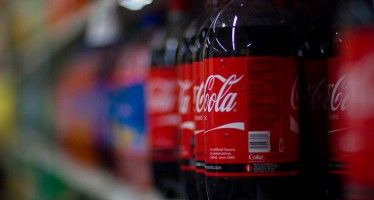Cal Chamber sues state for profiting from AB 32
By Wayne Lusvardi
The California Chamber of Commerce on Tuesday sued the state of California to stop it from making a profit by selling “free” air pollution emission credits as part of the new Cap and Trade program.
Ninety percent of the first round of pollution permits will be given out for free. So the California Air Resources Board will be skimming off a $3 billion profit for itself for effectively free permits. It is typically only in con games that something that can be obtained for free can be sold for such a whopping markup price.
The state is making a 25 percent profit on administrative and regulatory costs and the diversion of 25 percent of auction revenues to “disadvantaged” communities. Also, the 75 percent of auction revenues to go for electricity rebates will be in the form of politically correct wealth redistribution. Disadvantaged communities will get green energy project subsidies. Nonprofit green tech industries set up in disadvantaged communities will be the beneficiaries of political patronage. Wealthier communities won’t get a full 75 percent rebate on electricity costs.
The lawsuit does not include a petition for an injunction to halt the auction of pollution credits. So the first auction proceeded as planned on Wednesday. Neither does the lawsuit challenge any of the science behind global warming or the other provisions of Assembly Bill 32, the California Global Warming Solutions Act, passed in 2006 by the Legislature and signed by then-Gov. Arnold Schwarzenegger.
The Cap and Trade part of the law was passed by a simple majority vote. The original legislation granted authority only to enforce fees to recover regulatory and administrative costs. The position of the Chamber of Commerce is that the Legislature is creating a new tax out of “thin air.” That is because it takes a supermajority (two-thirds) vote of the legislature to pass a tax in California.
Proposition 26, requiring a supermajority vote to pass new taxes and fees, was approved by the voters in 2010. But Prop. 26 is not retroactive to 2006, when AB 32 was passed.
State Sued for Selling Air for a Profit
The new Chamber of Commerce lawsuit contends:
“What was not authorized by AB 32 is the Board’s decision to withhold for itself a percentage of the annual statewide greenhouse gas (GHG) emission allowances and to auction them off to the highest bidders, thus raising from taxpayers up to $70 billion or more of revenue for the state to use. The only issue addressed in the litigation is the portion of CARB’s regulatory program that seeks to permit the Board to allocate to itself GHG emissions allowances and to profit from selling them to GHG emitters.”
California’s Cap and Trade program won’t even begin to actually enforce air emissions reductions on public-regulated or governmental utilities until 2015. So CARB is projected to collect up to $3 billion in 2013 for virtually zero short-term reductions in emissions. Instead, utilities would have to auction their free “permits” to fund wind and solar energy projects. Utility ratepayers would be paying up front for green energy projects that are arguably not specifically authorized under AB 32. These up-front green energy projects are meant to reduce the eventual utility rate shock. That rate shock will come from the 33 percent green power mandate under AB 32 for all energy by the year 2020.
However, the media spin put on the roll out of CARB’s Cap and Trade auction is that any increases in utility bills will be a wash. That is because the auction monies will eventually be rebated to customers.
Which raises the $70 billion question: if 75 percent of the auction surtaxes are to be rebated anyway, why not just regulate air emissions by conventional methods and impose fees on polluters rather than creating the social fiction of an auction?
The California Legislative Analyst’s Office has previously said that an auction is not even necessary to cut air pollution. And why require water utilities that pump water with clean hydropower from Hoover Dam to buy pollution permits? Where is the climate “science” behind that?
‘Disadvantaged Air’ Communities to Reap Profit
How revenues collected under Cap and Trade will be distributed has already been established by two prior pieces of legislation. Gov. Jerry Brown signed these two laws in late September.
AB 1532, by Assembly Speaker John Perez, D-Los Angeles, creates a Greenhouse Gas Reduction Account. Control of this account will be by CARB.
The governor’s Strategic Action Council was authorized in 2008 under SB 732, by Senate President Pro Tem Darrell Steinberg, D-Sacramento.
A third bill, SB 535 by Sen. Kevin de Leon, D-Los Angeles, would divert 25 percent of the Cap and Trade surtaxes to communities purportedly “disadvantaged” by air pollution. But the redistribution of auction revenues for that purpose appears to have no basis in reality.
Should smoggy agricultural inland cities — such as Visalia-Porterville, Fresno, Merced and Bakersfield — subsidize green jobs in lower-income industrialized coastal industrial cities that have clean coastal air, such as Oakland, Alameda and Richmond?
Should smoggy and wealthy industrial-based cities — such as the City of Industry, the City of Commerce, and Vernon in Southern California — subsidize “poorer” but clean coastal cities such as Oxnard, National City, and the Wilmington area of Los Angeles? Where is the science behind such a policy? SB 535 turns California’s Cap and Trade program into political pollution pork.
Cap and Trade Auction Could Produce ‘Volts’
California’s pollution permit auction opened for business for the first time on Wednesday for three hours of trading. According to CARB rules, pre-registered companies can bid for pollution permits as long as the price is above the $10 per ton of carbon dioxide “floor price.” A permit allows one metric ton of carbon dioxide pollution to be emitted into the air. Initial bidders at the first auction reportedly were Southern California Edison and San Diego Gas & Electric. Successful bid prices will be revealed next week.
Industries lined up for Cap and Trade revenues reportedly included General Motors. GM wants to use the funds for rebates to buyers of electric cars. GM was bailed out of insolvency by the Obama administration to the tune of $50 billion. Partly from those funds, GM built the controversial Volt electric car.
Democrats Afraid to Put Auctions to a Vote
The California Chamber of Commerce has waited since 2006 to file a lawsuit to challenge pollution permit auctions as unauthorized under the original Cap and Trade law. Apparently, the Chamber has had to wait until the tax was actually in force and to file the suit.
Coincidentally, Democrats soon will hold a two-thirds majority in the state legislature. They could pass a new bill authorizing the disputed part of Cap and Trade auctions. We’ll soon see if Democrats are afraid to bring this tax to the public for a vote.
CARB already has said it believes the court will uphold the Cap and Trade program as currently planned. It’s likely the liberal U.S. 9th Circuit Court of Appeals would affirm CARB’s position. So this case may be headed to the U.S. Supreme Court.
(A filed copy of the Memorandum of Points and Authorities in Support of Verified Petition for Writ of Mandate and Complaint for Declaratory Relief can be found here. A filed copy of the Petition for Writ of Mandate and Complaint for Declaratory Relief can be found here.)
Related Articles
Legislators Consider Merits of Williamson Act
Mar. 3, 2010 By KATY GRIMES For more than 45 years, California farmers, ranchers and land owners have voluntarily participated
Banning Raves and Party Buses
Katy Grimes: Nanny Golden State is coming to the rescue once again, to save the little people from themselves. Because
S.F. Supervisors pass laws requiring health warnings on soda ads
On Tuesday, the San Francisco Board of Supervisors unanimously voted to pass legislation that would require posted advertisements for sodas




